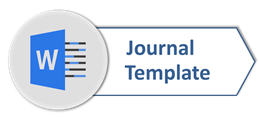The Use of Joylada Application in Teaching Narrative Writing
Abstract
The research aimed to increase students’ writing skills on narrative text in English lesson by using Joylada application. The subject of this research was eighth-graders at one of Junior High School in South Tangerang City which considered 40 students. The method of this research was quantitative method with pre-experimental study. The data were collected by giving pre-test and post-test as the instruments. The result of this research showed that there was increasing of student in narrative writing skill. The result was calculated by using t-test. The findings proved that the students in pre-test was 2500 with the mean score 62.5. The lowest score was 48 and the highest score was 75. Meanwhile, in the result of post-test 3336 with a mean 83.4. The lowest score was 75 and the highest score was 95. From the score result, it can be concluded that the higher score was post-test. The results of the t-test calculation showed that t-cal was 17.5 and t-table with degrees of freedom (df) 40 obtained 1.68. The significance value was less than 0.05 and t-cal > t-table. The result can be concluded that the Joylada application can be unique and an alternative for teaching narrative writing skills. The students can increase their narrative writing skills through Joylada application.
Full Text:
PDFReferences
Ababio, B. T. 2013. Nature of Teaching: What Teachers Need to Know and Do. International Journal for Innovation Education and Research, 37-48.
Abas, I., & Aziz, A. H. N. 2018. Model of the Writing Process and Strategies of EFL Proficient Student Writers : A Case Study of Indonesian Learners. Pertanika Journal Social Sciences & Humanities, 1-28.
Agustina, R. T. 2017. The Enhancement of Narrative Writing Skills through the Use of Accordion Book for 1 st Grade Students in Lesanpuro 1 Elementary School , Malang. International Journal of Social Sciences and Educational Studies, 26–31.
Apuke, O. D. 2017. Quantitative Research Methods a Synopsis Approach. Arabian Journal of Business and Management Review, 40–47.
Creswell, J., W. 2016. Qualitative, Quantitative, and Mixed Method Approaches. Research Design, 1-32.
Biria, R., & Ehsan, R. 2019. Promoting Academic Writing Proficiency of Iranian EFL Learners. Turkish Online Journal of Distance Education, 99-116.
Fatimah, S., & Raulan. 2018. Teaching Writing Narrative Text by Using “Webtoon Digital Comic” to Senior High School Students. Journal of English Language Teaching, 588–593.
Misbah, H., & Kurniawan, F. 2018. Students’ Problems of Dealing with Lecturer’s Indirect Corrective Feedback on Argumantative Writing. Pedagogy Journal of English Language Teaching, 107-121.
Khanza, M., & Nufus, T. Z. 2019. The Effect of Scaffolding toward Students’ Writing Procedure Text. English Language in Focus (ELIF), 33-42.
Janeiro, & Junho. 2011. Teaching Writing Through Genre-Based Approach. BELT Journal, 121-136.
Marzona, Y., & Ikhsan, M. 2019. An Analysis of Students’ Reading Comprehension in Narrative Text at Second Grade at SMAN 1 Talamau. Jurnal Ilmiah Pendidikan Scholastic (JIPS), 35-41.
Mirlohi, M., Ketabi, S., & Roustaei, M. 2012. The Effect of Instruction on Writing Performance of Intermediate EFL Persian Students. International Journal of Linguistics, 325–343.
Renandya, W. A., & Widodo, H. P. 2016. English Language Teaching Today: Building a Closer Link Between Theory and Practice. Nanyang Technology University. 1-307.
DOI: https://doi.org/10.33365/ts.v20i2.1060
Refbacks
- There are currently no refbacks.
Copyright (c) 2022 Mutiarani Mutiarani, Muhamad Sofian Hadi, Elka Caesarina

This work is licensed under a Creative Commons Attribution-ShareAlike 4.0 International License.
Teknosastik: Jurnal Bahasa dan Sastra
Publisher: Universitas Teknokrat Indonesia
Address: Zainal Abidin Pagaralam Street 9-11, Bandar Lampung, Indonesia
Website: https://ejurnal.teknokrat.ac.id/index.php/teknosastik/index

Creative Commons Attribution-ShareAlike 4.0 International License






